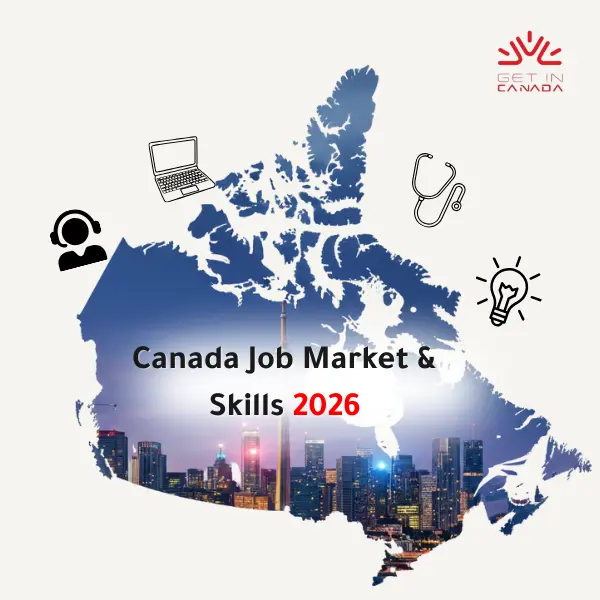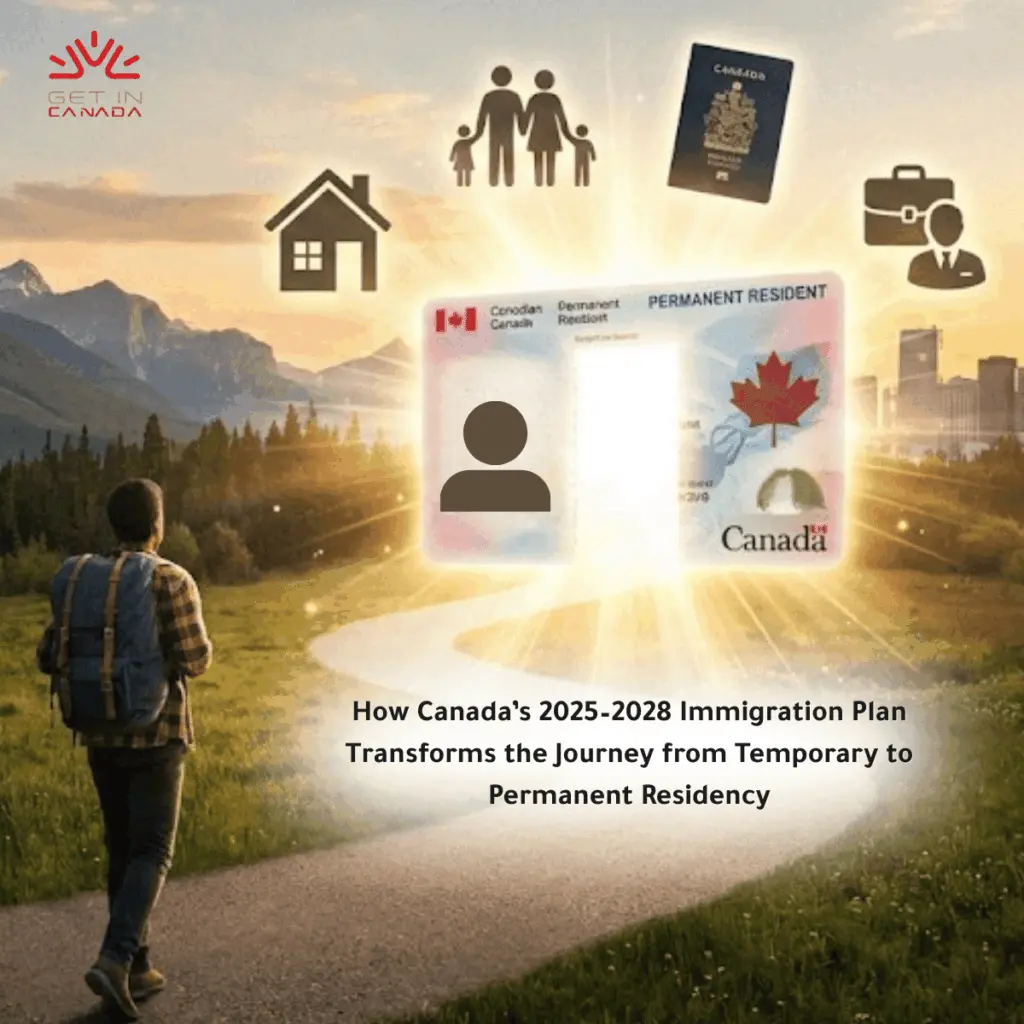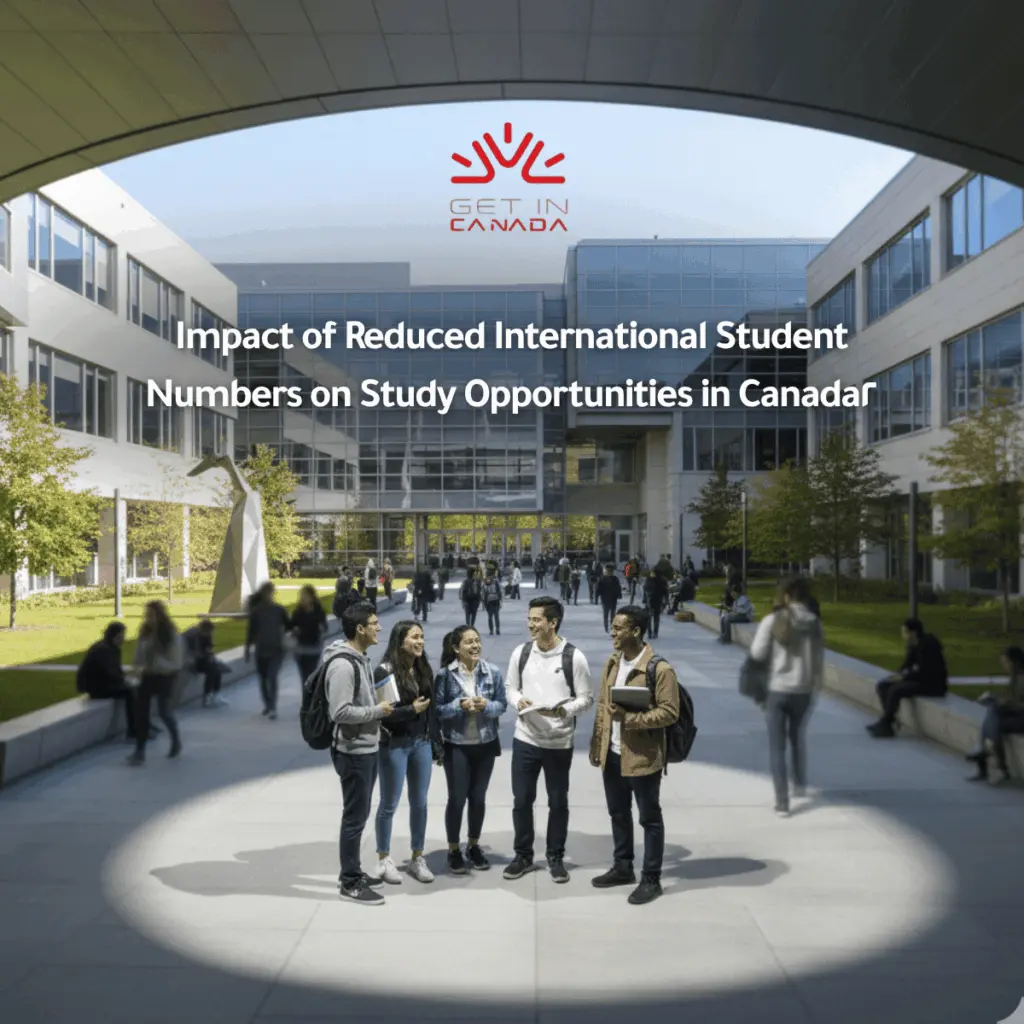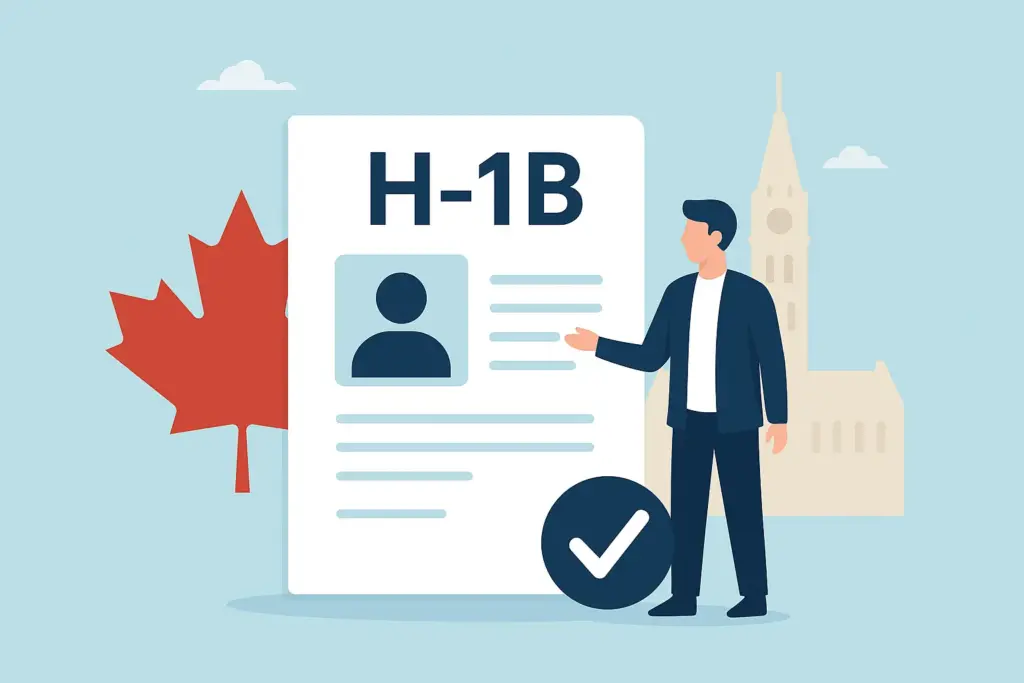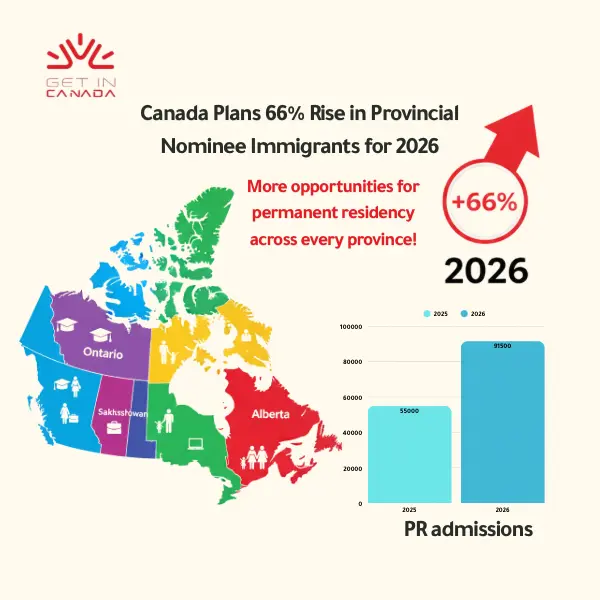IRCC Introduces Stricter Limits on Study Permits and Updates PGWP Requirements
Marc Miller, Canada’s Minister of Immigration, stated that stricter regulations related to study permits are here to stay. Immigration, Refugees and Citizenship Canada (IRCC) will start to award study permits with a decreased maximum of 437,000 as of 2025. This number represents a 10% drop from the 485,000 target set for 2024; a stabilization of the cap is anticipated in 2026.
Over the following five years, this reduction will lead to 300,000 fewer study permits, making it harder for overseas students to continue their education in Canada.

Key Changes to Canada’s International Student Program
Minister Miller outlined several critical updates to Canada’s immigration policies affecting international students. He stressed the importance of maintaining the integrity and sustainability of the immigration system.
Find out if you are eligible to get in Canada →
Important Reforms for Rebalancing the Immigration System
10% reduction in the cap on study permits for 2025 and 2026
The news regarding the decrease in the number of study permits granted was among the most noticeable. The Canadian government plans to lower study permits by 10% starting in 2025, with a new maximum of 437,000 permits. This is a component of a larger initiative to handle the growing number of temporary inhabitants, which has put pressure on services in towns with universities and other areas.
Miller stated, “Some international students are better set up to integrate and succeed in Canada. Graduate degree students, in particular, are well aligned with Canada’s labour market needs.” The revised policies aim to focus on quality over quantity, reserving 12% of study permits for master’s and PhD students.
Restrictions on Post-Graduation Work Permit (PGWP) Eligibility
The Post-Graduation Work Permit Program (PGWP), which has long provided international students with a route to work and permanent residency, has seen additional revisions announced. Students applying for PGWPs will have to meet new language proficiency standards as of November 1, 2024. These Language standards include:
- Graduates from universities must show that they have a 7 on the Canadian Language Benchmark (CLB).
- Graduates from college will require a CLB score of 5.
The goal is to better match Canada’s economic priorities with PGWP eligibility. Public college graduates will only be granted work permits if their subject of study is associated with shortages in the job market. Over the next three years, this action is anticipated to result in a 175,000 reduction in the number of PGWPs.
More Tight Rules Regarding Spousal Open Work Permits
Additionally, Miller announced that only spouses of students participating in PhD programs, specific master’s degrees, and specific professions would be eligible for Spousal Open Work Permits. The government plans to issue 50,000 fewer spousal work permits over the next three years, with a particular emphasis on alleviating the severe labour shortages in industries such as construction and health care.
By ensuring that the system gives priority to individuals who are most qualified to contribute to the Canadian economy, such changes seek to balance immigration with the country’s economic needs.
International Students: Preparing for Life in Canada
One of the most pressing challenges has been the dramatic increase in international students. In 2023, over 900,000 international students were studying in Canada. Many of them had a hard time adjusting to living there, particularly in terms of finding cheap accommodation.
The government has increased the cost-of-living criteria for holders of study permits in order to make sure that students are more equipped for life in Canada. Furthermore, the systematic verification of admission letters from approved educational institutions will aid in preventing fraud against overseas students. Together with the study permit cap, these actions are beginning to pay off, as evidenced by the 38% drop in the number of foreign students entering Canada between January and August 2024 (200,000 less than the previous year).
What Can Be Expected from Canada’s Immigration System?
The Immigration Levels Plan for 2025–2027, which will establish the framework for Canada’s immigration policy in the coming years, will be presented by the government by November 1, 2024. Over the following three years, the number of temporary residents is to be lowered from 6.5% of the overall population to 5% in order to maintain a balance between immigration levels and Canada’s ability to accept immigrants.
In response to the difficulties posed by an ageing population, changing demands in the labour market, and the realities of post-pandemic economic pressures, Canada’s immigration laws are changing. The changes that Minister Marc Miller unveiled mark a calculated turnabout, with an emphasis on maintaining the integrity of the system while managing immigration levels. These initiatives are meant to make sure that newcomers are prepared for success and that communities have the means to support them since immigration is still Canada’s main source of economic growth.


